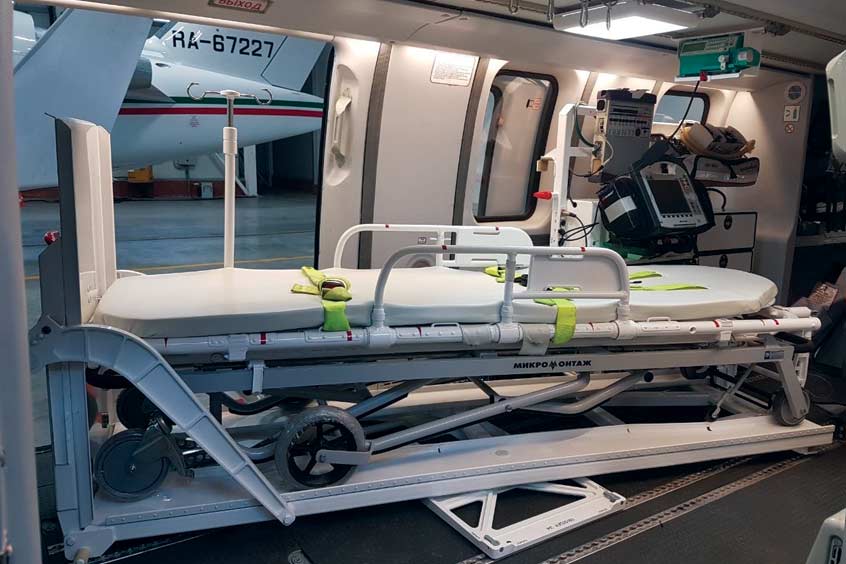Why visit ACE ’25?

An Ansat helicopter used for sanitary aviation by the Republican Clinical Hospital (RCH) of the Ministry of Health of the Republic of Tatarstan in Russia has been equipped with a new medical module with improved patient loading convenience. The work was carried out by the maintenance department of airline UVT Aero with the participation of specialists from Russian Helicopters subsidiary Kazan Helicopter Plant.
The Ansat medical helicopter, which helps the specialists of the RCH and the Children's Republican Clinical Hospital to evacuate critically ill patients from the regions of Tatarstan, was modernised by installing a medical module with an increased ease of loading. Now the helicopter is equipped with special rails that allow medical equipment to be attached to the ceiling of the passenger cabin. With the help of retrofitting, it has been made possible to adjust the lighting system and place it in the desired area. The syringe pump and other equipment has also been moved along the booth to an optimal position in relation to the patient.
The use of a medical module with increased ease of loading on an Ansat helicopter was approved by the Russian Federal Air Transport Agency in August 2020. The Tatarstan ambulance Ansat became the first rotary wing aircraft on which this option was implemented.
The new medical module manufactured by Kazan Aggregate Plant is distinguished by a modified layout, which facilitates loading and unloading of the patient. This process has become more convenient thanks to the use of uniform stretchers, equipment and a gurney. All manipulations for loading and unloading the patient can now be performed by one medical worker. The patient can be moved from a helicopter to an ambulance without additional transfer, and even a short-term shutdown of life-support devices does not occur, which significantly reduces the risks for the victim during transportation.
In 2020, 184 medical evacuations were carried out in Tatarstan using the Ansat helicopter. For the first time, patients who suffered from road accidents outside the republic were evacuated. The helicopter has flown to the Nizhny Novgorod, Voronezh and Kirov regions.
The Ansat is a light twin-engine multipurpose helicopter, the serial production of which performed at the Kazan Helicopter Plant. According to its certificate, the design of the helicopter allows it to be quickly transformed into both cargo and passenger versions with the ability to carry up to seven people. In May 2015, an addendum to the type certificate was received for the modification of the helicopter with a medical module. The Ansat is certified for use in the temperature range from -45 to +50 degrees Celsius, as well as for operation in high mountains. In August 2018, based on the results of certification work, Rosaviatsia, the Russian Federal Air Transport Agency, issued the Kazan Helicopter Plant approval of the main change to increase the resources of a number of Ansat units and systems. In 2019, the Federal Air Transport Agency certified an increase in the fuselage resource of the Ansat light helicopter to 16,000 hp. In February 2020, the Russian aviation authorities certified the installation of an emergency splashdown system at Ansat. Also, approval was issued for a major change to increase the airworthiness limitations of a number of the main components of the helicopter, which makes the Ansat helicopter even more attractive for potential customers and increases its competitiveness in comparison with foreign helicopter technology.
The airline UVT Aero successfully works in the format of state partnership and performs a set of works for the needs of air ambulance operations. Maintenance and airworthiness procedures include pre-flight and post-flight training performed by engineering personnel, as well as such forms of maintenance as operational, periodic, special, storage and seasonal maintenance. To service the Ansat helicopter, UVT Aero has done a lot of work on training engineering and technical personnel, conducting training for personnel and purchasing the necessary equipment.